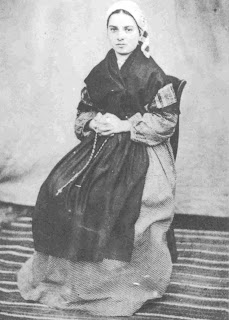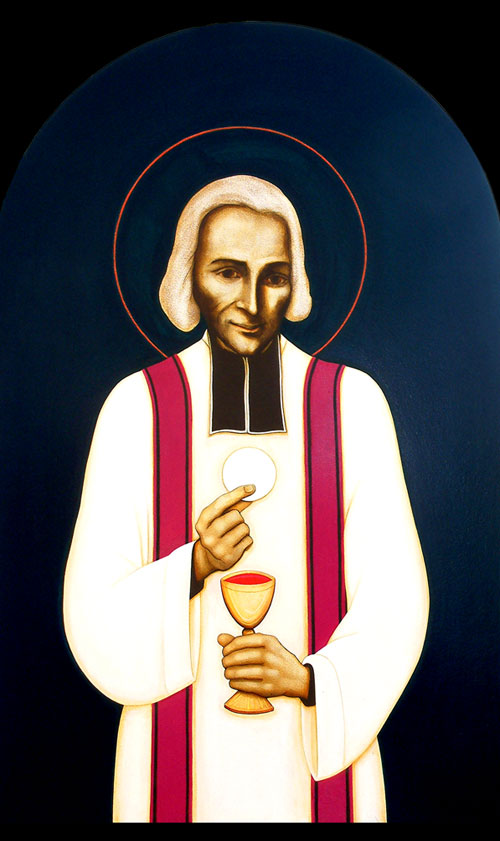~Matthew 23:23
We must practice charity without neglecting the traditions of the Church.
"Above all, don't look as if you approved of evil whatever you do..."
~Padre Benedetto Nardella, spiritual director of Padre Pio whom he described as the man who "formed" him
 "Padre Pio is known for not tolerating any women in wearing low-necked dresses or short, tight skirts, he didn't even allow his spiritual daughters to wear transparent stockings, esp. in the confessional. [You read it, even 'in the confessional.'] When he saw anyone like that, he called them “clowns” and dismissed them. The same for boys and men, they are not allowed to enter the Church with three-quarter length sleeves and they had to wear long trousers. Padre Pio's religious brothers had to fasten a sign to the Church door: "By Padre Pio's explicit wish, women must enter the confessional wearing skirts at least 8 inches below the knee. It is forbidden to borrow longer dresses in church and to wear them to confession." Another sign read: "The Church is the House of God. It is forbidden for men to enter with bare arms or in shorts. IT IS FORBIDDEN FOR WOMEN TO ENTER in trousers, WITHOUT A VEIL ON THEIR HEAD, in short clothing, low necklines, sleeveless or immodest dresses." " (From "Prophet of the People: A Biography of Padre Pio" by Dorothy Gaudiose)
"Padre Pio is known for not tolerating any women in wearing low-necked dresses or short, tight skirts, he didn't even allow his spiritual daughters to wear transparent stockings, esp. in the confessional. [You read it, even 'in the confessional.'] When he saw anyone like that, he called them “clowns” and dismissed them. The same for boys and men, they are not allowed to enter the Church with three-quarter length sleeves and they had to wear long trousers. Padre Pio's religious brothers had to fasten a sign to the Church door: "By Padre Pio's explicit wish, women must enter the confessional wearing skirts at least 8 inches below the knee. It is forbidden to borrow longer dresses in church and to wear them to confession." Another sign read: "The Church is the House of God. It is forbidden for men to enter with bare arms or in shorts. IT IS FORBIDDEN FOR WOMEN TO ENTER in trousers, WITHOUT A VEIL ON THEIR HEAD, in short clothing, low necklines, sleeveless or immodest dresses." " (From "Prophet of the People: A Biography of Padre Pio" by Dorothy Gaudiose) |
| St. Bernadette of Lourdes wearing Veil |
For 2,000 years, Catholic women have veiled themselves before entering a church or any time they are in the presence of the Blessed Sacrament (e.g., during sick calls).
Sacred Scripture presents several reasons for wearing the chapel veil. St. Paul tells us in his first letter to the Corinthians (11:1-16) that Christian women must cover their heads because it is a Sacred Tradition commanded by our Lord Himself and entrusted to Paul: "The things I am writing to you are the Lord's commandments" (1 Cor. 14:37). "That is why a woman ought to have a veil on her head, because of the angels" wrote St. Paul (1 Cor. 11:10).
Though I am not a Canon lawyer, the following is easy to understand.
It was written into the 1917 Code of Canon Law,
Canon 1262.2:
"Men, in a church or outside a church, while they are assisting at sacred rites, shall be bare-headed, unless the approved mores of the people or peculiar circumstances of things determine otherwise; women, however, shall have a covered head and be modestly dressed, especially when they approach the table of the Lord."
But though the 1917 Code of Canon Law was replaced by the 1983 Code, it is still somewhat in force as in the following.
When the 1983 Code of Canon Law was produced, veiling was simply not mentioned (not abrogated, mind you, but simply not mentioned). However, Canons 20-21 of the 1983 Code of Canon Law make clear that later Canon Law abrogates earlier Canon Law only when this is made explicit and that, in cases of doubt, the revocation of earlier law is not to be presumed; quite the opposite:
Canon 20 A later law abrogates or derogates from an earlier law, if it expressly so states, or if it is directly contrary to that law, or if it integrally reorders the whole subject matter of the earlier law. A universal law, however, does not derogate from a particular or from a special law, unless the law expressly provides otherwise.
Canons 27 and 28 add to the argument:Canon 21 In doubt, the revocation of a previous law is not presumed; rather, later laws are to be related to earlier ones and, as far as possible, harmonized with them.
Canon 27 Custom is the best interpreter of laws.
Canon 28 Without prejudice to the provisions of can. 5, a custom, whether contrary to or apart from the law, is revoked by a contrary custom or law. But unless the law makes express mention of them, it does not revoke centennial or immemorial customs, nor does a universal law revoke particular customs.
From Various Internet Sources
All Photos do not belong to the webmaster and are solely used for educational and religious purposes.
All Photos do not belong to the webmaster and are solely used for educational and religious purposes.
